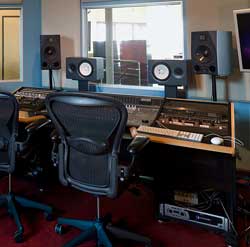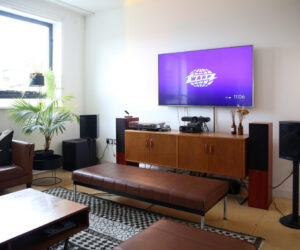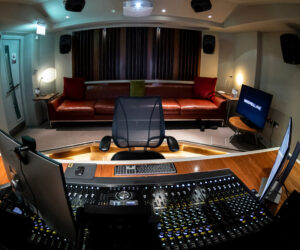The brainchild of Matthew McArthur, a graduate of Berklee College of Music, and brought to life with the help of Dr. Susan Rogers, Associate Professor at Berklee College, Department of Music Production & Engineering (MP&E), The Record Company (TRC) was created to serve Boston youth in a multiplicity of ways.
As Matt put it in a recent interview, “The idea for TRC was born from two needs we identified: music technology instruction for teens and low-cost recording facilities for independent artists. Music in public schools and other venues is declining, so we wanted to create new opportunities, particularly in music technology because with youth being interested in that technology, it’s one of the easiest ways to communicate with teens.
“That, and we wanted independent musicians to have a venue to collaborate and make recordings,” he continued, “but not the same music scene you’d see in New York or LA. We were looking to create a place that fostered a sense of community where two pressing needs could be met and where both target populations could help one another: the kids could help independent musicians, and vice versa.”
Located a mile from Berklee, TRC boasts a newly renovated facility and a curriculum that introduces audio technology as it relates to computer-based production and hands-on activities in the recording space with microphones and other equipment.
Elaborating, Dr. Rogers added, “TRC’s youth education is modeled after Berklee’s award-winning MP&E program. Music instruction is well represented in the Boston youth education community, so TRC is offering opportunities in an untapped niche, music technology instruction. Our curriculum uses engineering and production roles to model the kind of social/workplace structures that kids will likely encounter as adults.”
“On any given day, a system where the student can be the producer, the engineer or assistant engineer, or even a performer. By training young people under a paradigm where their roles are collaborative yet constantly shifting, we hope to teach some social and professional skills these kids can take into whatever profession they choose.”
“If, however, we identify those kids with a strong interest and capacity for production and engineering, they will have the chance to intern with young producers, musicians and engineers, and perhaps learn a trade,” Rogers points out.
Asked about the professional outlook for those who seek a career in audio engineering, McArthur confirms, “There’s a larger sense of possibilities for audio production these days. Many of my peers who just graduated from Berklee headed out to New York and LA pursuing careers in wider areas: A colleague of mine in music synthesis is doing audio and sound design for an iPhone software company. Another is scoring for TV, and others are working for video game companies that have very large budgets, which allows for work at a very high level.
“In terms of the older recording studio models,” he continues, “if the consumer no longer pays for an artist’s recording online, perhaps he or she would be willing to subsidize the cost of recording by supporting a community organization such as ours.”
“If the community subsidizes our need for space and manufacturers subsidize our need for equipment, we can pass these savings along to independent musicians and ease the sting that many of their recordings are distributed without payment.”
Asked why they chose ADAM Audio monitors, Matt replies, “We decided to partner with ADAM based on a number of factors. In terms of the product, when we sat down and listened to a pair of ADAMs at an AES Convention, I was impressed with the accurate stereo imaging, especially when considering the speakers were in a very large, untreated room. ADAM also represents an up and coming brand that a lot of my peer group are interested in and use on a regular basis. It’s always good to see a newer company coming into the marketplace with good, high quality products.”
Concluding, McArthur underlined the core purpose of TRC, “Overall, our principal interest is not in making the choice of an audio career for these students, but general social and personal development in preparing for a professional career.”




















